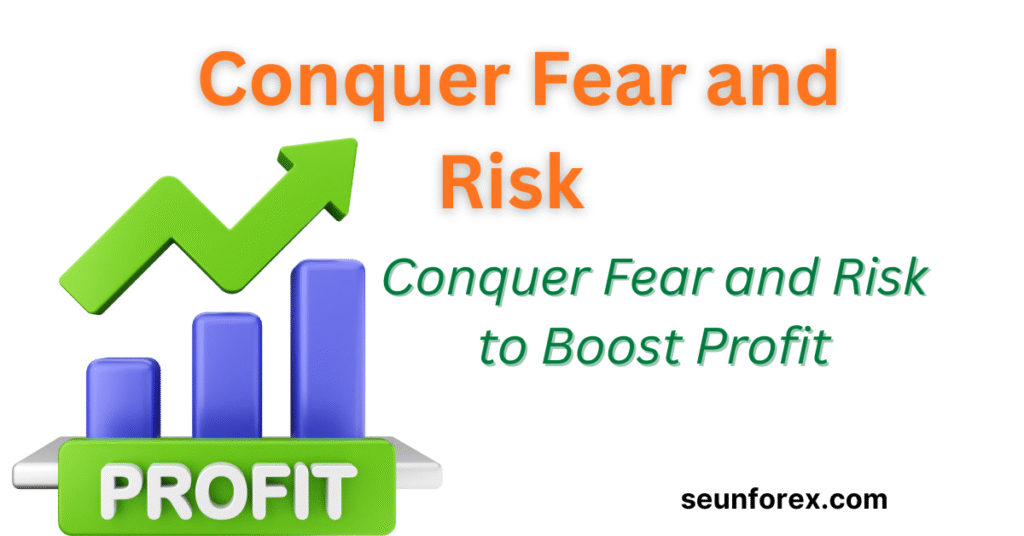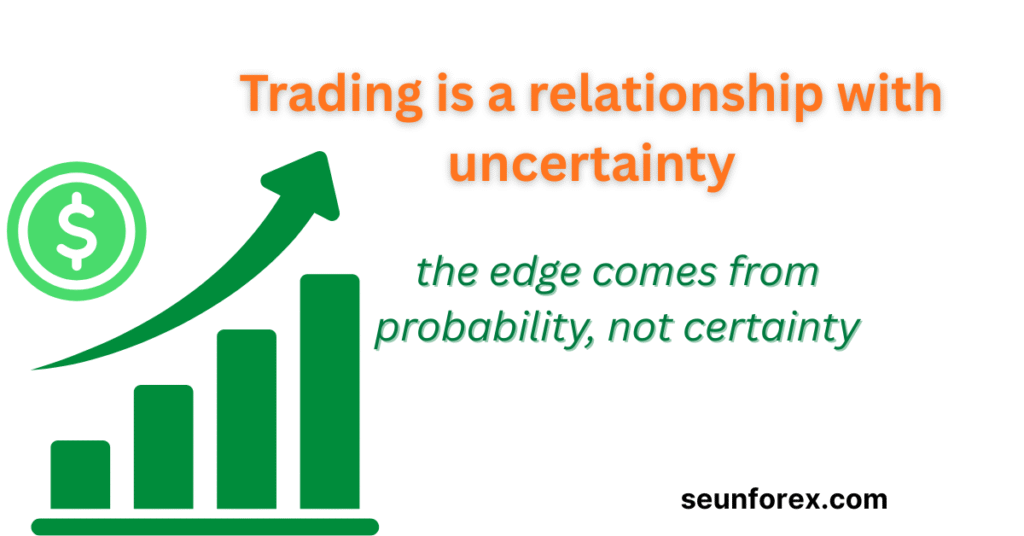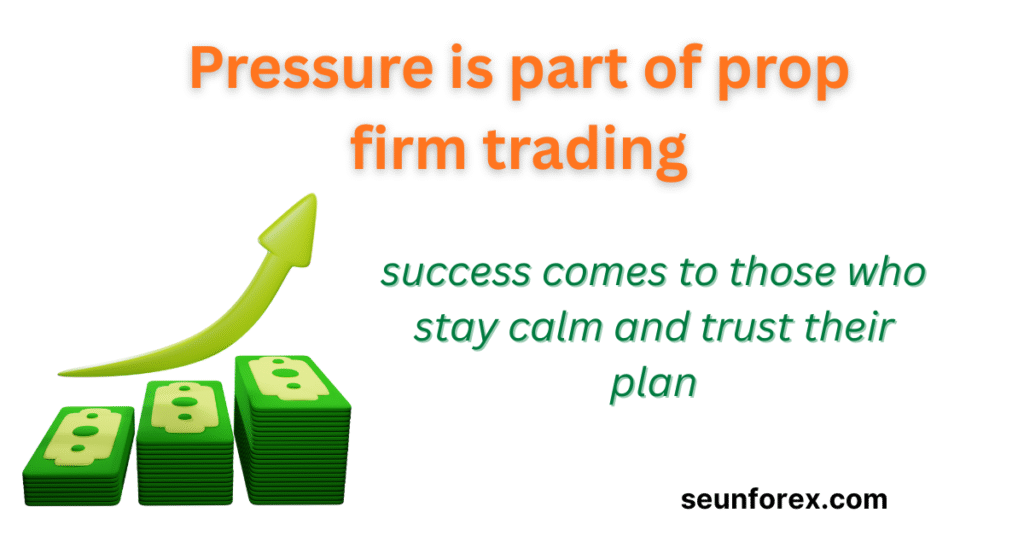
“Know thyself, and you’ll know your edge.” — Ancient trading wisdom
Trading risk tolerance isn’t just about numbers—it’s about knowing yourself.
Before traders chase profits, they face a silent opponent—themselves. Every trader dreams of big wins, but few truly understand how much pain they can handle before they break. Risk tolerance in trading isn’t about account size or strategy; it’s about your psychological bandwidth for uncertainty, pressure, and loss.
The truth? Most traders don’t blow their accounts because of bad setups—they blow them because of bad emotions.
🧠 The Hidden Battle Behind Every Trade
Every candle on a chart tells two stories: what the market did and what the trader felt.
Fear. Hope. Greed. Hesitation.
They flicker behind every entry and exit, shaping your emotional discipline in trading.
But beneath them lies a deeper question—how much trading risk tolerance do you truly have before your logic shuts down?
Trading risk tolerance is not just a number; it’s a reflection of your nervous system’s capacity for stress.
Your risk management mindset determines whether you react from emotion or from structure.
Steve Nison taught us how candles reveal crowd emotion.
Mark Douglas showed that trading psychology mastery comes from inner control.
And Paul Tudor Jones reminded us: “Don’t focus on making money, focus on protecting what you have.”
The greats don’t trade charts—they trade their reactions to risk, guided by self-awareness and emotional balance.
⚖️ Why Traders Misjudge Their Tolerance
Most traders overestimate how calm they’ll be when real money is at stake.
You think you’ll stick to your plan—until the market tests your patience.
You think you’ll cut losses quickly—until the loss feels personal.
You think you can hold winners—until greed whispers that you can double it.
This isn’t a lack of skill—it’s a gap between your trading risk tolerance and your emotional discipline in trading.
When your risk perception doesn’t match your risk management mindset, emotional overload takes control.
And once emotion leads, logic fades. That’s when traders make impulsive decisions:
- Moving stop-losses
- Over-leveraging after wins
- Revenge trading after losses
- Taking “one more trade” to prove something
Developing trading psychology mastery means understanding these reactions and strengthening your trader self-awareness before the next market test.
💥 The Neuroscience of Risk
Our brains weren’t built for trading screens—they were built for survival.
In the jungle, risk meant life or death. In markets, it means numbers flashing on a screen.
But your amygdala doesn’t know the difference. It reacts to a $500 loss the same way it would to a tiger’s roar.
When the fight-or-flight system activates:
- Your breathing shortens
- Your judgment narrows
- You stop processing logic
- You act from emotion, not strategy
That’s why you can have a perfect plan on paper, and still sabotage it in real time.
Trading discipline isn’t about willpower—it’s about emotional regulation under volatility.
🧭 The Spectrum of Risk Tolerance
Risk tolerance isn’t static. It’s dynamic.
It changes with your experience, equity curve, life pressure, and emotional energy.
Here’s how it usually evolves:
- Naïve Phase: You’re fearless because you don’t yet understand risk. You overtrade.
- Reactive Phase: You’ve been burned. You fear every candle.
- Adaptive Phase: You balance awareness with composure. Risk feels manageable.
- Professional Phase: You treat risk like oxygen—essential, but unemotional.
The goal is not to avoid fear—it’s to operate through it.
Every great trader has scars. They just learned how to trade without letting pain steer the wheel.
🧩 Risk Identity: Your Personal Relationship with Uncertainty

Your risk tolerance is shaped by your personality, upbringing, and beliefs about money.
If you grew up seeing money as scarce, risk feels like danger.
If you associate winning with self-worth, losses feel like personal failure.
These subconscious beliefs run your trading decisions.
Ask yourself:
- Do I see risk as opportunity or threat?
- Do I attach my identity to my P&L?
- Can I accept uncertainty without anxiety?
Your answers define your emotional stop-loss.
🧘♂️ Fear, Loss, and the Human Condition
Every trader faces the same emotions—fear of missing out, fear of being wrong, and fear of losing capital.
But beneath all those fears lies a deeper one: the fear of losing control.
When a trade goes against you, you’re not just watching red numbers—you’re watching your confidence fade.
And when confidence fades, logic follows.
That’s when traders abandon plans, chase setups, or “pray” for reversals.
This is where your trading risk tolerance and emotional discipline in trading are truly tested.
The antidote is trader self-awareness—understanding how far your emotions can stretch before they break your plan.
By building a strong risk management mindset and practicing trading psychology mastery, you can stay composed even when volatility rises.
Recognize your emotional tipping point before the market exposes it—because awareness is the first step to control.
💡 The Subtle Role of Ego
Ego disguises itself as confidence.
It whispers: “You’re smarter than the market.”
Then, when the market humbles you, it flips: “You’re not good enough.”
Both are lies.
Ego thrives in extremes—overconfidence and self-doubt.
To manage risk effectively, you must trade without ego interference.
That means accepting being wrong as part of the process—not a verdict on your intelligence.
When you can lose money without losing identity, you’ve reached emotional maturity.
🔥 Pain as a Teacher
Every blown account carries tuition.
You either learn from it—or repeat it.
Most traders only change after pain.
Pain forces reflection.
It forces discipline.
It humbles the impulsive and hardens the consistent.
As Ed Seykota said: “Everybody gets what they want out of the markets.”
If you want excitement, you’ll get volatility.
If you want consistency, you’ll have to sacrifice impulse.
Pain reveals what you truly value.
🧱 Building Risk Awareness
Start by observing—not judging—your reactions to risk.
When you lose $50, how do you feel?
When you win $300, what do you do next?
That feedback loop defines your tolerance more accurately than any formula.
Keep a risk journal.
Note emotional triggers, hesitation points, and physical sensations (tension, sweating, racing thoughts).
Over time, patterns emerge—and those patterns reveal your emotional thresholds.
⚔️ The Role of Probability Thinking
Professional traders think in probabilities, not certainties.
They accept that even perfect setups can fail.
They know risk isn’t something to avoid—it’s something to price.
When you see risk as a cost of doing business, not a personal threat, you detach emotionally.
This detachment breeds clarity, and clarity breeds better execution.
As Mark Douglas said:
“The best traders have learned that they don’t need to know what’s going to happen next to make money.”
🧘♂️ Building Emotional Resilience
In trading, success doesn’t belong to the smartest—it belongs to the most resilient.
Every trader faces the same reality: drawdowns, losing streaks, missed opportunities, emotional fatigue.
But what separates winners is their ability to stay functional under psychological pressure.
Resilience isn’t about being emotionless—it’s about recovering faster than you break down.
🧩 The Emotional Recovery Curve
After every loss, your mind enters recovery mode.
Some traders bounce back within hours. Others take weeks.
The longer your emotional recovery time, the higher your risk of revenge trading.
You must shorten the emotional lag between reaction → reflection → reset.
Try this framework:
- Reaction: Allow the emotion—don’t suppress it.
- Reflection: Journal the mistake without blame.
- Reset: Return with adjusted clarity, not avoidance.
You can’t control the market, but you can control your mental bounce rate.
💬 The Trader’s Inner Dialogue
Listen to your self-talk after a loss.
Do you sound like a coach or a critic?
Your inner voice determines how you interpret risk events.
If it says “I blew it,” you activate shame.
If it says “I learned something,” you activate adaptation.
The first voice drains your focus.
The second voice compounds your resilience.
Mindset hack: Replace “I lost” with “I paid tuition.”
This simple reframe turns pain into a long-term investment in skill.
🏗️ Testing Your Tolerance Like a Professional
You can’t expand your risk tolerance by reading—it must be trained.
Just as athletes build endurance, traders must condition their emotions through exposure.
Practical Tolerance Test:
- Trade small but deliberately.
- Increase position size only when you can stay emotionally calm at the previous level.
- If anxiety spikes—pause, don’t push.
Each emotional plateau you overcome becomes your new comfort zone.
That’s how professionals grow psychological capital.
💸 Prop Firm Pressure: The Hidden Psychology

Prop firm challenges amplify every weakness in a trader’s mindset.
They compress pressure into strict time limits and profit targets, exposing how well you manage your trading risk tolerance under stress.
When pressure builds, the trader’s mind shifts from process focus to result obsession—and that’s where breakdown happens.
You start watching equity instead of structure.
You measure success by profit, not by discipline.
And each tick against you feels like judgment.
This is the true test of emotional discipline in trading.
Without a strong risk management mindset, fear and impatience replace structure.
To survive and thrive, treat every prop firm challenge as a trading psychology mastery exercise—not a test of worth.
Your goal isn’t simply to pass—it’s to stay within your psychological lane.
When you align confidence with control and strengthen trader self-awareness, performance flows naturally.
⚖️ Balancing Fear and Confidence
Fear protects capital. Confidence grows it.
But too much of either destroys balance.
- Too much fear = paralysis
- Too much confidence = recklessness
True mastery is walking that emotional tightrope.
The way to maintain it is through position sizing.
When your lot size matches your psychological comfort, clarity follows.
When it exceeds it, logic evaporates.
Your position size isn’t just a risk number—it’s an emotional thermostat.
🧩 The Daily Drawdown Mirror
If you trade a $5,000 prop account with a 4% daily drawdown, you’re allowed to lose $200 per day.
But here’s the deeper truth—your emotional drawdown might be smaller.
If you can’t think clearly after losing $100, that’s your real limit.
Not what the prop firm says, but what your mind can sustain.
Your goal is not to push to the edge; it’s to extend the edge slowly through experience.
Risk tolerance grows through time, not temptation.
🕯️ Trading Fatigue and Decision Quality
When you trade tired, your tolerance shrinks.
Fatigue turns minor losses into emotional trauma.
This is why seasoned traders take timeouts.
Stepping away isn’t weakness—it’s risk management through energy conservation.
Each session drains emotional capital. If you don’t refill it with rest, reflection, and routine, your risk threshold collapses.
Protecting your mental equity is as important as protecting your trading equity.
🔁 The Loop of Emotional Overexposure
Many traders believe blowing accounts means a lack of skill.
In truth, it often reveals a weak trading risk tolerance and emotional overexposure.
You’ve exposed your nervous system to more uncertainty than it could handle—faster than it could adapt.
That’s not a trading problem; it’s a trading psychology mastery issue.
Some traders lose $100 and panic, while others lose $1,000 and stay calm.
It’s not about the money—it’s about conditioning, emotional discipline, and your risk management mindset.
Emotional discipline in trading must scale gradually, just like physical training.
You can’t bench 200 pounds without first mastering 50.
Likewise, you can’t hold a $5,000 swing trade without first managing a $200 loss calmly and with trader self-awareness.
🎯 The Discipline of Emotional Neutrality
Professional traders operate from emotional neutrality—a mental zone where neither win nor loss defines behavior.
They still feel emotions, but they don’t act on them.
This neutrality comes from:
- Consistent journaling
- Defined risk parameters
- Detachment from outcome
- Structured pre-trade routines
Your goal is to make your mental state predictable, even if the market isn’t.
🧘♀️ How to Build Mental Toughness Daily
Here’s a resilience workout you can apply every day:
- Pre-trade breath check: 5 deep breaths before analysis.
- Visualize drawdown: Imagine losing and calmly following your plan.
- Post-trade reflection: Write what emotion dominated the session.
- Detach: Step away after every trade. Don’t babysit candles.
- Reward process, not profit: Celebrate discipline, not luck.
Do this consistently for 21 days—and you’ll feel your emotional ceiling expand.
⚔️ The Mental Edge of Acceptance
The greatest emotional shift happens when you finally accept uncertainty.
Once you stop demanding that trades must work, risk stops feeling like threat.
You stop predicting and start responding.
You stop hoping and start observing.
Acceptance doesn’t mean passivity—it means peace under pressure.
That’s where clarity, timing, and confidence live.
🧭 Designing Your Psychological Risk Plan
Every trading plan should include a psychological risk plan—a blueprint for handling emotional volatility.
Include sections like:
- ✅ Maximum emotional drawdown per day
- 🧘 Reset rituals (breathing, journaling, walking)
- 🚫 Emotional triggers to avoid
- 💬 Support accountability (mentor, trading partner)
If you plan your emotions the same way you plan your trades, chaos loses its grip.
📉 The Emotional Cost of Ignoring Risk Tolerance
When you ignore your tolerance level, the consequences multiply:
- Overtrading to “earn back control”
- Emotional exhaustion
- Repeated sabotage during good streaks
- Long breaks caused by burnout
Eventually, your trading becomes trauma cycling.
Each loss feels heavier because it reactivates all the past ones.
The only way to stop the cycle is to align your trading behavior with your emotional bandwidth.
💡 Practical Risk Tolerance Formula (Beyond Numbers)
Forget 1% or 2% per trade.
Here’s the real formula:
Risk only what allows you to sleep peacefully.
If a position makes you anxious, it’s too big.
If it excites you excessively, it’s too risky.
The perfect risk feels boring—because it aligns with control, not chaos.
When trading becomes emotionally stable, consistency follows.
🔥 Building Anti-Fragility
The market will test you again and again.
Each drawdown is not destruction—it’s data.
You can’t eliminate emotional pain, but you can become anti-fragile—stronger through exposure.
- When fear visits, listen to it—but don’t let it drive.
- When greed whispers, pause and breathe.
- When doubt rises, trust the plan you built in calm moments.
That’s how resilience compounds.
Each bounce-back adds one more layer of psychological armor.
🧱 Final Reflection: Know Thy Risk, Know Thyself
Risk tolerance is the mirror of your trading soul.
It reflects how deeply you know yourself under stress.
Trading success is not found in entries or exits—it’s found in your response to uncertainty.
If you want to understand the psychological core of how much risk you can truly handle, Investopedia’s guide on Risk Tolerance offers a foundational perspective.
It explains how your emotions, goals, and financial limits shape decision-making—knowledge every trader needs before scaling up.
But knowing your limits is only half the equation.
You must also learn how to recover mentally when those limits are tested or broken.
That’s why reading Trading Loss Recovery: Psychological Strategies is essential.
It shows how to rebuild emotional balance after setbacks, manage frustration, and turn losses into structured growth.
When you combine both lessons—understanding your risk tolerance and mastering psychological recovery—you stop trading reactively and start trading intelligently.
You stop fighting the market.
You stop fearing the loss.
You begin to see trading for what it truly is—a test of emotional precision.
🏁 Conclusion
Your risk tolerance defines your trading destiny.
The best traders in the world are not fearless—they are simply fluent in their fears.
They manage emotions like positions—measured, intentional, and strategic.
When you learn to do the same, you won’t just survive volatility—you’ll thrive in it.
Because the market rewards not the bold,
but the balanced.